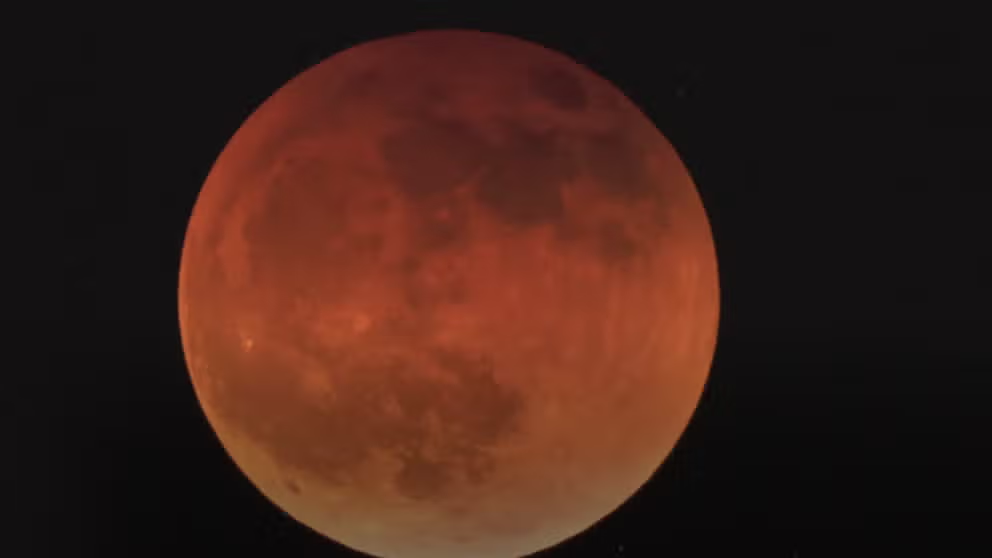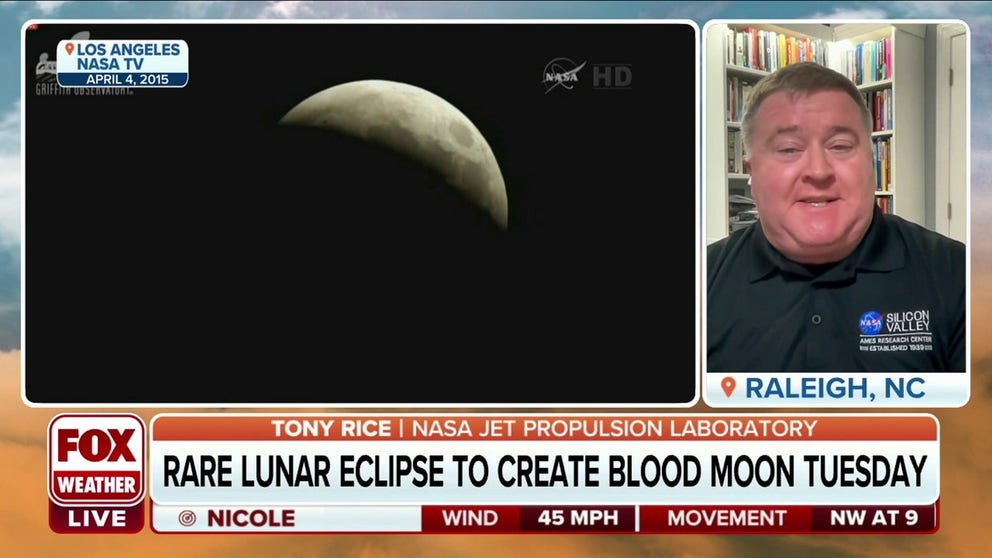Beaver blood moon total lunar eclipse 2022: When and where you can see it
In the U.S., the best beaver blood moon total lunar eclipse views will be between 4 a.m. EST (1 a.m. PST) until the moon sets, around 6:40 a.m. This total lunar eclipse will be the last until 2025, according to NASA.
Blood moon 2022: How and where to see the last total lunar eclipse until 2025
What is a blood moon? Here's how to see the last total lunar eclipse for two years.
The last total lunar eclipse visible in the U.S. for more than two years happens Tuesday overnight, and sky gazers on the West Coast have timing but not the forecast in their favor.
On Tuesday overnight, the sun, Earth and moon will align so that the Earth’s shadow covers the moon. It will be the last total lunar eclipse until March 2025. However, according to NASA, some partial and penumbral eclipses will occur during the next three years.
In case you missed it, here is a look at the total lunar eclipse.
This celestial event is known as the beaver blood moon lunar eclipse, and its totality will be visible to North and Central America, the Pacific, Asia, Australia and New Zealand.
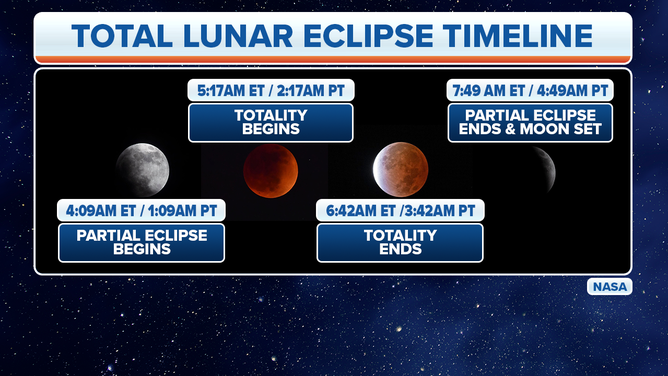
Beaver blood moon total lunar eclipse milestones for Nov. 8, 2022.
(FOX Weather)
TIPS ON HOW TO PHOTOGRAPH THE MOON
The total lunar eclipse will mark the second of the year. The last eclipse happened in May but was only visible to part of the U.S.
When is the November lunar eclipse happening?
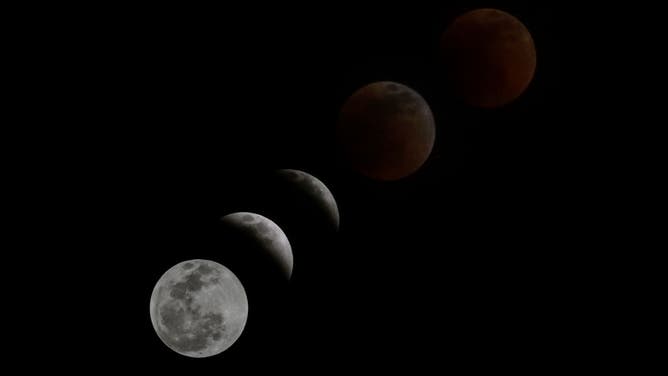
Multiple exposures were combined to produce this image) The moon is in eclipse on Sunday night from Bogota, Colombia on May 15, 2022. (Photo by Juancho Torres/Anadolu Agency via Getty Images)
(Getty / Getty Images)
In the U.S., the best views of the lunar eclipse will be between 4 a.m. EST (1 a.m. PST) until the moon sets.
Those in the West will have the best opportunity to view the eclipse because totality begins at 5:17 a.m. ET or 2:17 a.m. PT. The Earth’s shadow will cover the entire moon during totality. At this point, the moon will appear to have a copper color.
NASA Ambassador previews Election Day's total lunar eclipse
Tony Rice, Ambassador for the NASA Jet Propulsion Laboratory, on where and when skygazers can catch a glimpse of the blood moon eclipse.
A lunar eclipse is often called a blood moon because, during an eclipse, the only sunlight reaching the moon passes through Earth’s atmosphere. That leaves red light -- which has a longer wavelength than blue light and is less prone to be scattered out by our atmosphere -- to cast a reddish glow on the lunar surface.
According to NASA, weather can impact how red the moon will look. The more dust and clouds in Earth’s atmosphere, the redder the moon will appear.
By 6:42 a.m. EST when totality ends, the sun will be up on the East Coast, while the West Coast won’t have to compete with sunlight just yet and can enjoy the last moments of the eclipse.
WHY DOES THE MOON TURN RED DURING A LUNAR ECLIPSE?
How you view the eclipse also depends on the forecast. You can step outside and look up if you have a clear sky.
How to watch online
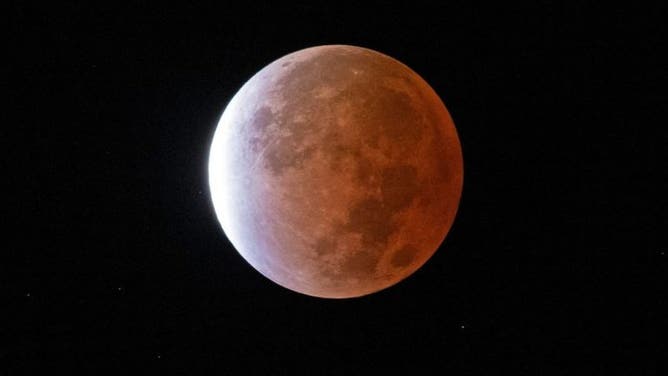
A nearly total eclipse of November’s full beaver moon captured over the city of New Orleans before dawn on Nov. 19, 2021. (Credits: NASA/Michoud Assembly Facility)
(NASA)
If the forecast is not in your favor, there are several ways to watch online.
The Lowell Observatory in Flagstaff, Arizona will air a live stream on YouTube beginning at 4 a.m. EST (2 a.m. MST).
The Virtual Telescope Project will also carry the lunar eclipse live on YouTube. The show with expert commentary begins at 4:30 a.m. EST.
Troubled forecast for West Coast sky gazers
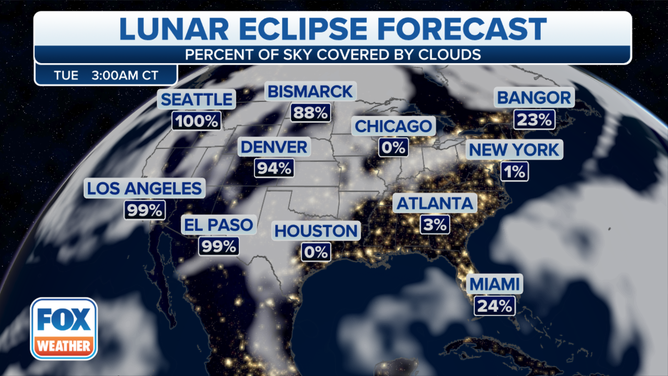
Night time cloud cover for the U.S. on Nov. 8, 2022 during the total lunar eclipse.
(FOX Weather)
Sky gazers in the Sierra Nevada may have trouble viewing the eclipse due to the ongoing winter storm casting snowfall, gusty winds, rain and clouds across Northern California, Nevada, Washington and Oregon.
According to the FOX Forecast Center, the first wave of winter weather will move through California from north to south Monday. The second wave arrives late Monday, and rain and heavy mountain snow will persist through Wednesday.
Those in the Northern Rockies need to bundle up before heading outside to look up at the blood moon glow as the coldest air of the season moves in on Monday.
To find out how clear the sky will be in your area Tuesday, download the FOX Weather app and use the plan tab to add the total lunar eclipse for your location.
